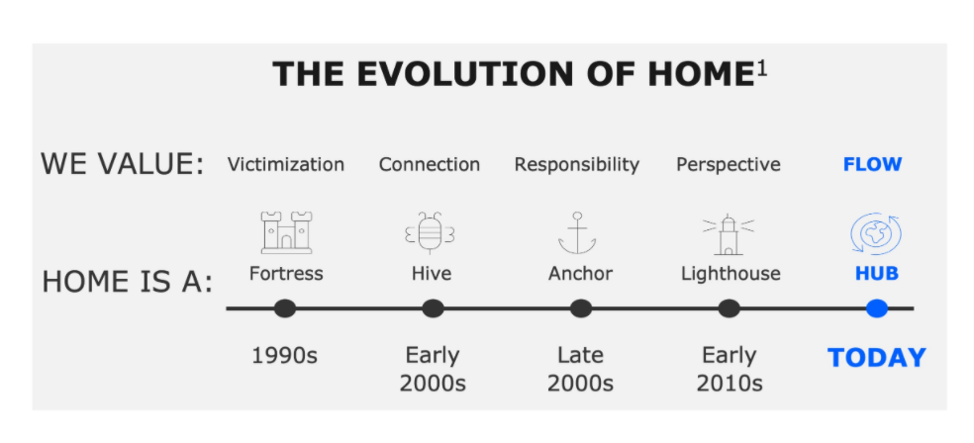 The COVID-19 pandemic has re-shaped consumers for work, school, fitness, cooking, and certainly for health care.
The COVID-19 pandemic has re-shaped consumers for work, school, fitness, cooking, and certainly for health care.
PwC’s Health Research Institute has combed through their consumer survey data and developed insights on health consumers, shared in a summary titled Consumer health behavior and the COVID-19 pandemic: What we’ve learned.
Most U.S. consumers would be likely to have a clinician visit their homes for several kinds of medical care, including:
- “DIY care,” as PwC exemplifies as a home strep or flu test, or remote monitoring, likely among 85% of people
- A chronic care visit, likely for 78% of consumers
- A visit for an acute sickness or injury, for 77%, and
- A wellness visit or physician, likely among 75% of people.
Those percentages were polled as of September 2020, about six months into the now-year+ long pandemic,
Peoples’ homes became their safe havens, literally, in the public health crisis, or our “Year of COVID” as Dr. Michael Osterholm of CIDRAP has nicknamed 2020.
 Among other important insights in the report is this one graphed in the second chart from PwC’s report. Here we see that where a health citizen prefers to get a coronavirus vaccine differs by race and age:
Among other important insights in the report is this one graphed in the second chart from PwC’s report. Here we see that where a health citizen prefers to get a coronavirus vaccine differs by race and age:
- The older a person is, the more likely they would prefer to receive their COVID-19 shot in a doctor’s office: two-thirds of people 65 and over prefer a doctor’s office compared with only about one in four people under 35 preferring the medical office for a vaccine. Younger Americans prefer retail health settings for vaccines: retail clinics, urgent care sites, or retail pharmacies.
- Just over one-half of White Americans would prefer to receive a COVID-19 vaccine in a doctor’s office, versus about one in four Black or Latinx health citizens in the U.S. preferring the medical office. Instead, nearly 60% of Black and Latinx folks in America would like to use a retail clinic, urgent care center, or pharmacy to get a coronavirus vaccine.
With consumers primed for DIY and more virtual care, PwC recognizes that health care providers are less aligned with new sites and platforms for care delivery. While 34% of consumers overall would be willing to receive an initial assessment of a health condition virtually, only 10% of provider executives agree with that. Similarly, there is a gap between the 37% of U.S. adults ready to receiving ongoing treatment for a chronic condition via virtual care compared with less than half that percent of provider execs open to managing chronic conditions virtually in terms of the effectiveness of doing so.
Still, more provider executives are more open to providing certain types of care via telehealth –namely mental health (especially useful for younger health citizens during the pandemic), OB/GYN, and primary care such as family medicine and pediatrics.
PwC’s recommendation here is for the supply-side executives from providers, pharma and health plans to determine which virtual care services make “the most sense and for whom.” That’s why the vaccination-place-preference is so useful in seeing health care values through patients’ eyes — of course through demographics, but more importantly through psychographics that consider peoples sense of values, personal histories, and especially health equity and social determinants factors.
PwC’s HRI team polled 10,003 U.S. adults in April 2020, 2,501 iu May, and 2,511 in September. In addition, the research also surveyed 153 provider executives, 124 pharmaceutical execs, and 128 health plan executives.
 Health Populi’s Hot Points: Homes-as-safe-havens will continue in Americans’ collective mindsets, according to research from Kantar published in February 2020. In America at Home, the market research group explained how people in the U.S. adapted their homes for a post-COVID world, identifying several main themes including the expectation that, “wellness will be seamless,” and “simplification is the new mantra.”
Health Populi’s Hot Points: Homes-as-safe-havens will continue in Americans’ collective mindsets, according to research from Kantar published in February 2020. In America at Home, the market research group explained how people in the U.S. adapted their homes for a post-COVID world, identifying several main themes including the expectation that, “wellness will be seamless,” and “simplification is the new mantra.”
This last exhibit comes out of Kantar’s paper, showing the evolution of how we humans see “home.” A fortress in the 1990s, our houses have morphed into hives, anchors, lighthouses, and today, as “hubs” that enable greater “flow.”
PwC’s research is further evidence, through the healthcare delivery lens, of Kantar’s insights into our homes as health, wellness, and safety hubs.
